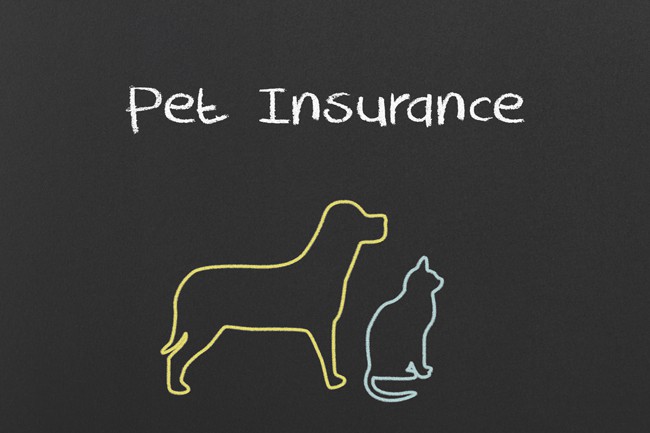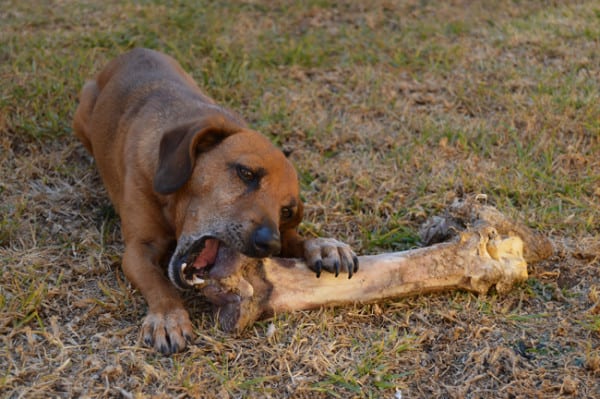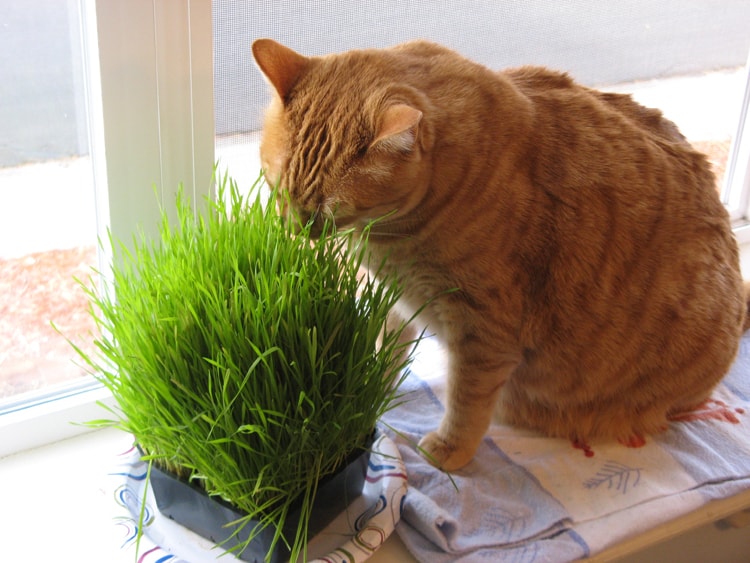While basking quietly in my cozy reading chair and watching the morning sun coming through my east bedroom window, I was surprised by the sudden PA-LOP! that brought me out of my reverie. There, to my surprise, was my sweet cat curling up in my lap, wanting to also enjoy those welcome rays of morning sun.
My hand naturally fell on her soft mink-like fur, and for the next few moments I was adrift in a peaceful sense one can only call surreal! Allowing my thoughts to stay with the moment, it occurred to me that no matter what age we are, so many of us appreciate our dogs, cats, and many other pets in a plethora of ways.
Here are just a few areas where pets have become simply indispensable to our humanity:
- As helpers on the farm
- As backyard guardians
- As police and war animals
- As guides to the blind or disabled
- In hospitals to comfort the sick
- And in my case, and maybe yours, as loving companions
I have such a happy, healthy animal—although somewhat neurotic as she cannot be left alone at night—because she has eaten a raw food diet since her kitten days, when I found her abandoned by the mother cat. As my hand caressed her healthy, soft fur, I remembered the many times I’d seen pets being fed the most atrocious and totally denatured diets. If you’ve recently visited a veterinary clinic, you’ll know the numbers of really sick animals is heartbreaking.
It was sad to think of how little appreciation many of us afford these animals for the many services they uncomplainingly provide us. Why is that? Lack of appreciation, I suppose!
Because I’m neither a veterinarian nor a strict professional on the subject, I thought to inquire of a few experts who work to heal or care for these treasured beings. I asked their opinions on the proper nourishment of our animals, specifically on raw food diets.
 It wasn’t easy to pick just a few experts who I felt were truly qualified to lead us in these endeavors, particularly in the short space available in a blog post. Nevertheless, after a great deal of research, I can share some brief thoughts from those authorities who finally made the grade.
It wasn’t easy to pick just a few experts who I felt were truly qualified to lead us in these endeavors, particularly in the short space available in a blog post. Nevertheless, after a great deal of research, I can share some brief thoughts from those authorities who finally made the grade.
My hope is that you’ll find their discourse helpful. I also included some links that I think are worthy of including in your spare reading time. Should your pet be eating the cheapest stuff you can find and is undernourished or sickly, this information may be a good incentive to switch to better choices.
Making the Grade Are the Following Experts
- Tracie Hoffman, veterinary technician and Standard Process mentor.
- Dr. Bruce Fife, ND, renowned author of all things coconut.
- Roberta Jamieson, Cofounder, Whippet Rescue Ontario, Canada. Roberta has worked with dogs, cats, and livestock for over 50 years.
- Dr. F.M. Pottenger of the Price-Pottenger Nutrition Foundation; studied the link between raw food and cats.
Tracie Hoffman: A veterinary technician with over 20 years of experience, Tracie uses her knowledge of conventional veterinary approaches and her expertise in whole food nutrition to create better options for doctors and their staff. Tracie offers assistance via phone and email throughout the region. You can reach her at THoffman@standardprocesswest.com.
“My opinion whether to feed raw diet varies among each individual pet. Eating raw food has many benefits, such as shinier coats, healthier skin, and smaller stools. However, we do have to look at some of the reasons to be cautious: pathogens in raw meat, including unbalanced diets by those not trained in the proper preparation of a raw food diet. Because of the controversy I tend to lean towards a reputable pet food company that provides bacterial testing and has the minimal nutritional requirements such as Nature’s Logic.
“If you decide to feed raw, I recommend reading Natural Nutrition for Dogs and Cats; Dr. Becker’s Real Food for Healthy Dogs and Cats; or Dr. Ihor Basko’s Fresh Food & Ancient Wisdom.
“Regardless if you choose to feed raw or not, every pet should be taking Canine Whole Body Support or Feline Whole Body Support to complete the nutritional gap that all of our pets face on a daily basis. Standard Process Whole Body Support provides general multisystem support for daily maintenance of all body systems, with emphasis on a healthy endocrine system.”
—Tracie Hoffman
Dr. Bruce Fife: Dr. Fife is a certified nutritionist, naturopathic physician, and the author of numerous books on the efficacy of coconut oil, including his new and intriguing pet book, Coconut Therapy for Pets. He is also the director of the Coconut Research Center.
In Coconut Therapy for Pets, Dr. Fife lists all the advantages of coconut oil for animals. It can help dry skin or flaky beaks, and it can return hair, fur, or feathers to a shiny luster such as you might never have even seen on your pet. With its metabolic abilities, coconut oil gives animals more energy and returns old animals to their youthful friskiness. Also, just as it can help with human infections, it can help with pet infections. Cats that eat coconut oil expel their worms after three days. Dogs that never stop scratching from fleas find relief and cure once the stuff is rubbed into their skin.
As a general rule of thumb, Dr. Fife recommends giving your dog or cat 1 teaspoon of coconut oil for every 10 pounds of body weight. For instance, a 20 pound dog would get 2 teaspoons daily. To learn many other amazing coconut oil uses for your pets, read “Are Your Pets Getting Their Daily Dose of Coconut?” by Emily Labutta. This article is newly discovered territory regarding your pet’s health.
Roberta Jamieson: Roberta is a Canadian expert who has raised dogs, cats, and livestock such as dairy and meat goats, cattle, and horses for over 50 years. She’s also been breeding sighthounds for over 30 years and has been involved in breeding, field trials, and exhibits in conformation, mainly whippets. Roberta is the main rescue person for whippets in Ontario, Canada. She runs several natural rearing groups and has kept a comprehensive natural rearing supplier and breeder directory since 1993, which has been available for free online since 1999. (Listings are also free. NR Supplier & Breeder Directories.)
“The principles of natural rearing have served my dogs, and ultimately me, for well over the last 29 years. One of the important principles of NR (natural rearing) is that of feeding a species-appropriate raw diet (meat, bone, organs, and a small amount of fermented or liquefied greens, berries/fruit).
“I am often asked why I would feed a raw diet to my dogs. Well, they are dogs, the first cousins of wolves and directly related by their DNA (c. 99.8 percent). If we breed a wolf to a dog, they produce fertile offspring. Now I don’t know about anybody else, but I don’t recall ever reading a research paper showing that wolves cook their food (grins)!
“Beyond the tongue in cheek, we humans are constantly being told not to eat processed foods. Well if you put those two things together we know that commercial pet foods are highly processed, so what makes anyone think that these foods are actually nutritionally sound for the entire 15-year lifespan of any given dog?
“When I changed my dogs’ diets from kibble and canned to raw species-appropriate, I very quickly began to see palpable positive changes. Their coats and skin improved, teeth became sparkling white, bad breath gone, doggy odor a thing of the past, and, incredibly, less shedding. Their energy levels improved as did their overall joie de vivre. I began to see some real changes by the second and third generations where missing testicles stopped happening (I would have at least one male pup in a litter, no matter which breed, with a missing testicle), no more missing teeth in borzoi (a common issue in the breed), and overall teeth became much stronger in that they weren’t wearing or breaking teeth by the second generation and up. These were palpable changes, along with overall great immune function and therefore health and longevity.”
Dr. Pottenger Discovers Raw Food
Dr. Pottenger discovered quite by accident that cats degenerated unless they were fed raw food. In his 10-year study of 900 cats, he found the optimal diet for his cats was ⅔ raw meat and ⅓ raw milk plus a little cod liver oil. If either the meat or the milk was cooked, the cats degenerated. And if both were cooked, the degeneration was much worse, and the cats could no longer reproduce by the third generation.
Some of the issues Pottenger found in the cats fed cooked food were heart problems; nearsightedness and farsightedness; under-activity and inflammation of the thyroid; infections of the kidney, liver, testes, ovaries and bladder; arthritis and inflammation of the joints; inflammation of the nervous system with paralysis and meningitis. And in the third generation, some of the cats’ bones became as soft as rubber. Lung problems, bronchitis, and pneumonia were also frequent. Moreover, the females became irritable and even dangerous, and the males became passive and lacked sex interest. The story of his findings are fascinating and well-documented in his short book Pottenger’s Cats.
Important: The Digestive Systems of Dogs and Cats
 The digestive systems of dogs and cats are short and acidic, and they handle bacteria well. This is why they’re not susceptible to salmonella, parasites, or E. coli from tainted meat as humans are. Humans have very long digestive tracks that allow food to “linger” for 24 hours or more, thus giving parasites more time to get into the bloodstream.
The digestive systems of dogs and cats are short and acidic, and they handle bacteria well. This is why they’re not susceptible to salmonella, parasites, or E. coli from tainted meat as humans are. Humans have very long digestive tracks that allow food to “linger” for 24 hours or more, thus giving parasites more time to get into the bloodstream.
Some people add fulvic acids to their pet’s raw food diet. According to research, fulvic acid neutralizes toxins and can eliminate food poisoning within minutes. When it encounters free radicals with unpaired positive or negative electrons, it supplies an equal and opposite charge to neutralize the free radical. Fulvic acid acts as a refiner and transporter of organic materials and cell nutrients. According to A. Szalay, fulvic acid has the ability to dramatically detoxify herbicides, pesticides, and other poisons that it interacts with, including many radioactive elements. This detoxification process may extend to animals and humans.
Best Resources for Raw Food Information
- “Homemade Raw Food Meal Recipes for Dogs, Cats and Ferrets” (from Shirley’s Wellness Cafe)
- “How to Create a Raw Dog Food Recipe” (from Fido Savvy)
- “Myths About Raw Feeding” (from Raw Fed)
- “The Natural Dog: A Guide to Raw Diet and Health the Natural Way” (from Raw Fed Dogs)
- “Toxic Junk Pet Food: The Shocking and Grisly Truth” (from Raw Fed Cats)
- Raw Meaty Bones
A Few Pet Tips from the Traditional Cook
- Don’t forget to use food-grade diatomaceous earth (DE) to prevent parasites in your pets or animals. Note: DE is a very fine fossil shell flour, and you and your pet should avoid inhaling it. Mix it into moist pet food or water. Read here to learn how it works to remove parasites. I use food-grade Perma-Guard DE only. Find more information and a dealer near you here.
- Feeding your pets too much liver or cod liver oil may cause vitamin A toxicity. Follow the advice of an expert when composing your own recipes.
- Remember that indoor dogs and cats must have some sort of exercise. Outdoor room to romp and play is ideal, but getting your indoor pets some form of exercise is essential. I have personally trained my cat to walk in the back yard with a leash. Not easy but doable.
- Grow or buy greens for your cats, and don’t forget to incorporate fermented foods for both your dogs and cats, as suggested by Roberta Jamieson in her discussion above.
- Should your pet pass away, or if you know someone whose pet has died, consider buying or sending a pet memorial.

Photos from iStock/Jevtic (at top) and Bahadir Yeniceri (pet insurance); photo of Trixie Lee by Maria Atwood
Note from Maria: I am a Certified Natural Health Professional, CNHP, not a medical doctor. I do not diagnose, prescribe for, treat, or claim to prevent, mitigate, or cure any human diseases. Please see your medical doctor prior to following any recommendations I make in my blogs or on my website.



